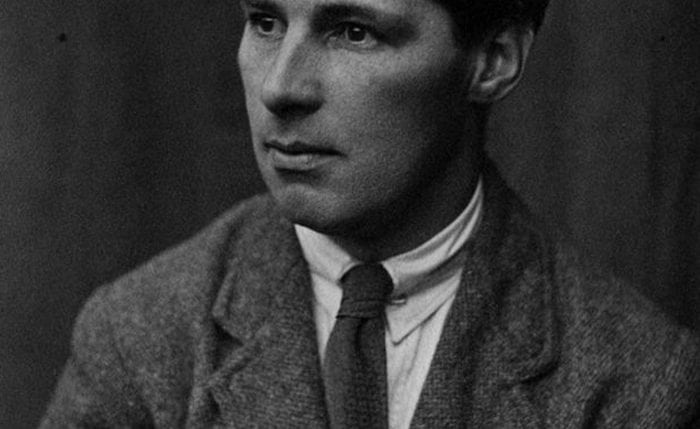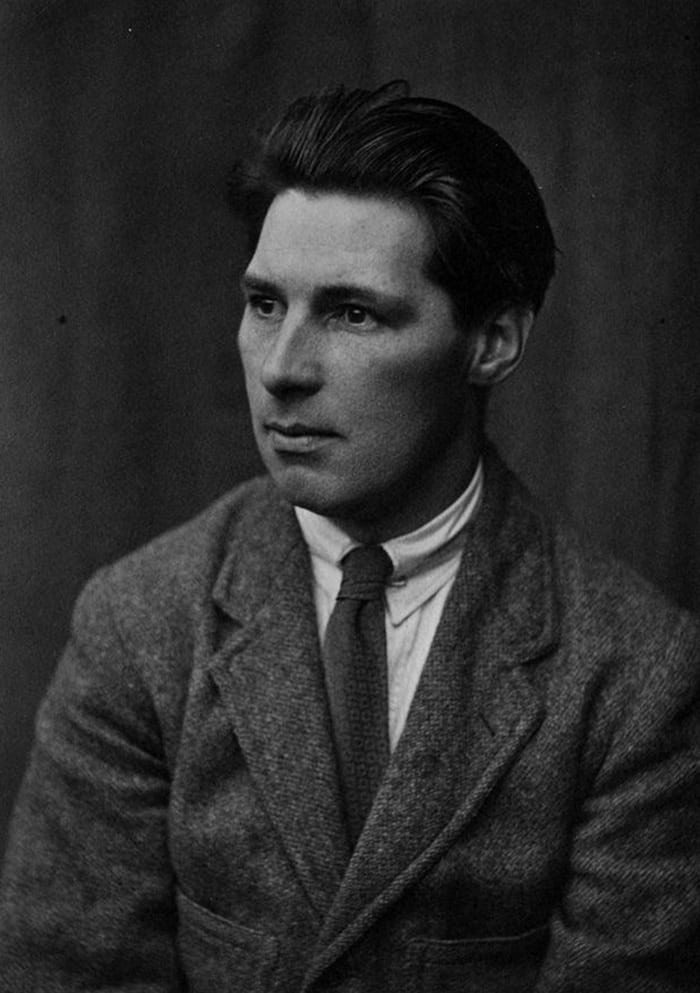
James Hogan
 Stained Glass Designer (1883-1948)
Stained Glass Designer (1883-1948)
James Humphries Hogan was born on 20th December 1883. He studied art at the Westminster School of Arts, before learning about stained glass at the Central School of Arts & Crafts, and then under the tutelage of William Aikman at the Camberwell School of Arts & Crafts.
From the age of 15, until his death, Hogan worked for the glass making company, James Powell & Sons (Whitefriars), enjoying a fifty year career with this firm. Hogan started as an apprentice in 1898 and rose to become Chief Designer and Managing Director, and finally Chairman in 1946.
For the first three decades Hogan was solely involved in the design and production of stained glass and was responsible for many major windows in Great Britain, the Dominions and America. His most important contribution, two windows for the great central space of Sir Giles Gilbert Scott’s Liverpool cathedral, were among the largest windows in the country, each 100ft in height. For St Thomas’s Church, New York City, Hogan aimed to create the jewel-like effect of, what he considered the best period of stained glass art, the thirteenth and fourteenth centuries. His obituary in The Times said that ‘both technically and historically, Hogan…was deeply learned in his craft, but what struck one most…was the completeness with which he had digested his knowledge’. It was only after the sharp decline in orders following the Great Depression that Hogan took an interest in domestic glass design.
In 1911 Hogan exhibited, at the Royal Academy (RA), a design for a stained glass window in a school chapel. He was a contributor, with C. F. A. Voysey RDI and others, to the RA’s War Memorials exhibition held in 1919 with the object of providing promoters of memorials with a survey of modern work by competent artists. The Arts & Crafts Exhibition Society’s 50th anniversary exhibition (1938) featured not only a flint glass bowl and goblet by Hogan but also a full size cartoon of his design for the Rose window for Liverpool Cathedral. An exhibitor at the Exhibition of British Art in Industry organized by the Royal Society of Arts (RSA) and the Royal Academy (RA), Hogan served on the advisory committee for the glassware section and gave talks to complement the exhibition; ‘Modern Glass’ at the RSA and on ‘English Design in Glassware’ at the V&A. For the ‘Design at Work’ exhibition (1948) Hogan designed a glass vase, inscribed with a monogram and coronet by Milner Gray RDI, for the RSA to present to the Duchess of Kent in thanks for opening this exhibition on the work of the RDIs. Hogan contributed a supply of his ‘Embassy’ glass for use in the Royal Pavilion at the Festival of Britain (1951).
Hogan designed a group of bowls for the Glass Sellers Company to present to King George V in commemoration of his Silver Jubilee in 1935. Two years later the Society of Glass Technology chose Hogan to be one of their first Fellows and adopted his design for their crest.
Following his election as a Fellow of the RSA in 1932 Hogan gave a talk on ‘Design and Form as applied to the Manufacture of Glassware’, for which he received the RSA’s Silver Medal. Hogan had said that ‘decoration should be restrained and always subservient to the form…there is no reason, even in the case of mass production why the articles produced should not be of good design’. Hogan remarked that the RSA, by the introduction of the distinction of Royal Designer for Industry (RDI), ‘was the first society to understand that “industrial design was equally as important as fine art”’. Hogan was one of the first RDIs to be appointed in 1936. In his lecture on ‘Stained Glass’ (1940) he said he wanted to ‘make people realise the wonderful quality that stained glass has’. ‘Even in the poorest home a piece of glass cheers up a room’ he said. As Master of the Faculty in 1942 Hogan, in his talk on ‘Pottery, Glass and Plastics’, stressed the importance of training claiming that ‘the first principle of a good design is honesty’. Hogan’s paper was one of the RSA series of lectures on The Post-War Home: its interior and equipment, published by The Studio the following year. As well as lectures Hogan represented the RSA at the Fourth Glass Convention, sat on the RSA’s Art Education Committee, set up in 1941 to ascertain the place and purpose of art and design in the post-war system of education, took the chair when, on behalf of Raymond Loewy HonRDI, John Gloag read ‘Selling through Design’ in 1941; and served as Chairman of the Pressed Glass section for the RSA Industrial Design Bursaries Competition in 1946.
Master of the Art Workers Guild (1945), member of the Arts & Crafts Exhibition Society, a Fellow of the Society of Master Glass-Painters, Hogan was also a fairly frequent exhibitor at the Royal Academy.
Sir Gordon Russell RDI wrote a tribute to Hogan for the RSA Journal in which he said that, although the range of work in the design of glass for quantity production, hand-made glass and stained glass windows was immense, this showed only one side of Hogan’s character. ‘Like many artists of the Renaissance he was a competent and reliable man of affairs. Business was part of life, and he found life interesting.’ Russell added that Hogan ‘wanted to see good things made’.
Britain Can Make It Exhibition Catalogue 1946
- Group R: Glass – items 238, 240, 242, 246, 247, 255, 256, 257 258, 260, 261, 262, 263, 264, 265, 266, 267, 268, 269, 270, 271, 272, 273, 274, 275, 276, 277, 282, 283, 284, 288, 289, 293, 296
Photograph courtesy of the family of James Hogan.
